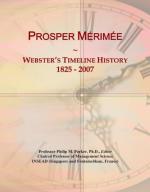|
This section contains 3,998 words (approx. 14 pages at 300 words per page) |

|
SOURCE: "Pagan Ritual and Human Sacrifice in Mérimée's Mateo Falcone," in The French Review, Vol. LV, No. 1, October, 1981, pp. 52-59.
In the following essay, Hamilton traces evidence of pagan myth in the story and symbolism of "Mateo Falcone."
The historical position of Mateo Falcone (1829) as the "literary prototype" and "modern source" of the short story reflects more than a judgement of aesthetic form.1 Mérimée based his masterpiece upon a traditional tale of Corsica which, unbeknown to him, was probably a variant of an ancient story.2 My thesis has to do primarily with the story-telling instincts of Mérimée rather than his deliberate intentions as a researcher and writer. He seized upon the ancient undercurrents of a legend and integrated a pagan myth into the Romantic aesthetic, creating a deceptively simple work composed of different cultural strata. The superimposed levels of thrust create a...
|
This section contains 3,998 words (approx. 14 pages at 300 words per page) |

|


